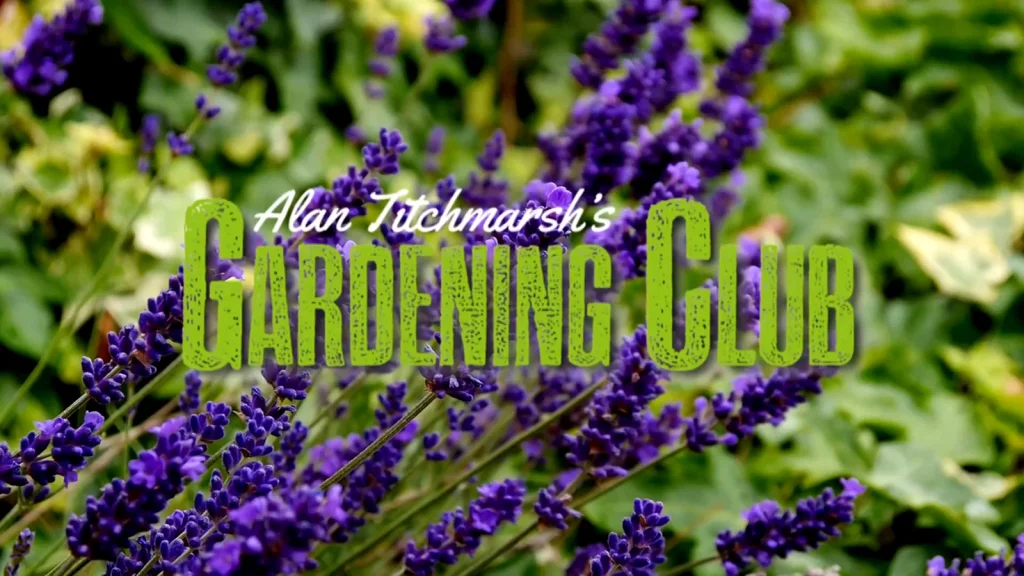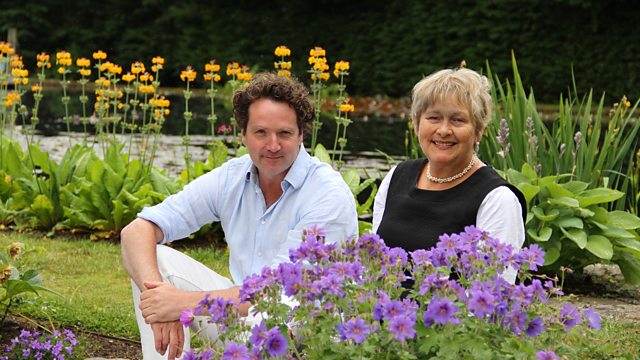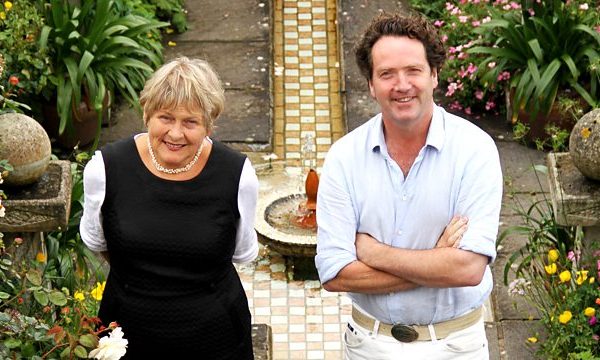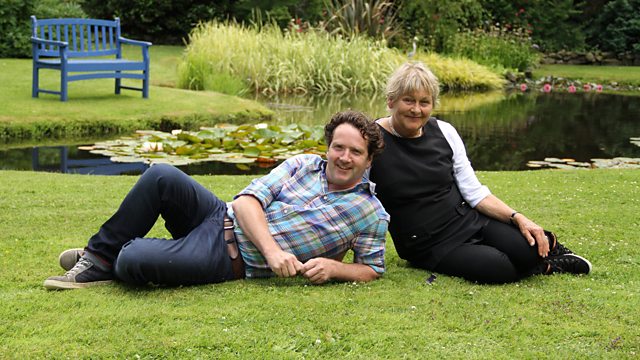Gardening Club episode 4: viewers are treated to a dual dose of horticultural inspiration. First, renowned eco-gardener Anna Greenland opens the doors to her Suffolk garden, sharing her expertise in a comprehensive composting masterclass. Then, the program journeys to Manchester to showcase a remarkable transformation: a once-neglected alleyway reborn as a vibrant community garden.
Anna Greenland, a passionate advocate for sustainable gardening practices, demystifies the art of composting. With her down-to-earth approach and wealth of knowledge, she guides viewers through the entire process, from selecting the right materials to troubleshooting common issues. Greenland emphasizes the importance of composting as a way to reduce waste, enrich the soil, and create a thriving ecosystem in the garden.
The masterclass covers a range of composting techniques, including hot composting, cold composting, and worm composting. Greenland offers practical tips on building and maintaining compost bins, balancing carbon and nitrogen-rich materials, and utilizing compost to nourish plants. Her enthusiasm for composting is contagious, inspiring viewers to embrace this eco-friendly practice and transform their kitchen scraps into “gardener’s gold.”
The episode then shifts gears to Manchester, where a group of dedicated residents has taken on a remarkable project: transforming a neglected alleyway into a flourishing community garden. The alleyway, once a dumping ground for rubbish, is now a haven of greenery, color, and life.
The transformation is a testament to the power of community spirit and a shared vision. Local residents came together to clear the alleyway, build raised beds, and plant a variety of flowers, vegetables, and herbs. The garden not only beautifies the neighborhood but also provides a space for residents to connect with nature, socialize, and grow their own food.
The alleyway garden project showcases the potential of underutilized urban spaces to be transformed into vibrant community assets. It serves as an inspiration for other neighborhoods to reclaim neglected areas and create their own pockets of green.
In addition to the composting masterclass and alleyway garden feature, the episode also includes segments on getting children involved in gardening and seeking houseplant inspiration at RHS Wisley. The diverse range of topics ensures there is something for everyone in this informative and engaging episode.
Whether you are a seasoned gardener or a novice enthusiast, Alan Titchmarsh’s Gardening Club episode 4 offers a wealth of practical advice, inspiring stories, and a renewed appreciation for the transformative power of gardening. Tune in to discover the secrets of composting, witness the magic of community gardening, and find your own green inspiration.
Nurturing Nature’s Bounty in Your Own Backyard
A Growing Movement: Gardening with the Earth in Mind
In recent years, a profound shift has taken root in the world of gardening. More and more, green thumbs are turning towards eco-conscious practices, recognizing the vital connection between our gardens and the health of our planet. This burgeoning movement is not just a trend; it’s a testament to our growing awareness of the impact our choices have on the environment. As we cultivate our gardens, we’re also cultivating a greener future.
But what exactly is eco-gardening? It’s a holistic approach that goes beyond simply planting seeds and watering them. It’s about creating a harmonious ecosystem where plants, soil, and wildlife thrive together. It’s about using sustainable methods that nourish the earth, conserve resources, and minimize our ecological footprint. And it’s about reaping the rewards of fresh, homegrown produce that’s not only good for us but also good for the planet.
Alan Titchmarsh’s Green Vision: A Sanctuary for All
At the forefront of this eco-gardening revolution is Alan Titchmarsh, a name synonymous with horticultural excellence. Through his Gardening Club, Alan shares his passion for sustainable gardening, inspiring countless individuals to transform their outdoor spaces into thriving eco-havens. His vision is simple yet profound: to create gardens that are not only beautiful but also beneficial to the environment.
Alan’s approach is rooted in the belief that every garden, no matter how big or small, can make a difference. Whether you have sprawling acres or a cozy balcony, you can play a part in nurturing nature’s bounty. By adopting eco-friendly practices, you can create a sanctuary that not only delights the senses but also supports a diverse range of plant and animal life.
Your Garden, Your Oasis: A Journey of Transformation
Embarking on the journey to create an eco-garden may seem daunting, but it’s a journey filled with discovery, joy, and a deep sense of fulfillment. It’s about reconnecting with nature, learning from its wisdom, and becoming a steward of the land. And the best part? It’s easier than you might think.
Throughout this series, we’ll delve into the practical steps you can take to transform your garden into an eco-friendly oasis. We’ll explore everything from soil health and composting to water conservation and natural pest control. We’ll discover the magic of companion planting and the importance of choosing the right plants for your ecosystem. And we’ll celebrate the incredible diversity of plant life that can thrive in your own backyard. So, roll up your sleeves, grab your gardening gloves, and let’s embark on this exciting adventure together. Your eco-garden awaits!
Building the Foundation: Essential Steps for an Eco-Friendly Garden
Embracing the No-Dig Method: A Gentler Approach to Gardening
Imagine a garden where the soil is alive, teeming with beneficial microbes and earthworms. A garden where plants thrive without the need for backbreaking digging and tilling. This is the promise of the no-dig method, a revolutionary approach that’s transforming the way we cultivate our green spaces.
Unlike traditional gardening, which involves turning over the soil, the no-dig method focuses on building up layers of organic matter on top of the existing soil. This creates a rich, fertile environment that supports healthy plant growth while minimizing disturbance to the delicate ecosystem below. As a result, you’ll enjoy a thriving garden with less effort and a lighter environmental footprint.
Harnessing the Power of Compost: Black Gold for Your Garden
If there’s one secret ingredient that can elevate your eco-garden to new heights, it’s compost. Often referred to as “black gold,” compost is a nutrient-rich elixir that feeds your plants, improves soil structure, and enhances water retention. And the best part? You can create it yourself using kitchen scraps and garden waste.
Think of your compost pile as a miniature recycling center, where organic materials are transformed into a valuable resource. By layering green materials (like grass clippings and vegetable scraps) with brown materials (like leaves and cardboard), you create the perfect environment for beneficial microbes to break down the waste and turn it into nutrient-rich compost. It’s a simple yet powerful way to close the loop and give back to your garden.
Conserving Water: Harvesting Nature’s Gift
Water is the lifeblood of any garden, but it’s a precious resource that we need to use wisely. In an eco-garden, water conservation is paramount. One of the most effective ways to achieve this is through rainwater harvesting.
By collecting rainwater from your roof and storing it in a water butt, you can create a sustainable source of irrigation for your plants. This not only reduces your reliance on tap water but also provides your plants with the purest form of hydration. It’s a win-win situation for both your garden and the environment.
Nurturing Growth: Sustainable Practices for a Flourishing Eco-Garden
Choosing the Right Plants: A Symphony of Diversity
Imagine your garden as a symphony orchestra, each plant playing a unique role in creating a harmonious melody. Just as a conductor carefully selects instruments to complement each other, you too must choose plants that thrive in your specific environment. This is the essence of plant selection in an eco-garden.
Consider your garden’s unique microclimate. Does it bask in full sun, or does it offer dappled shade? Is the soil sandy, clayey, or loamy? By understanding these factors, you can select plants that are perfectly suited to your garden’s conditions. Moreover, embrace diversity! A variety of plants not only creates visual interest but also fosters a resilient ecosystem that can better withstand pests and diseases.
Natural Pest Control and Disease Prevention: Nature’s Arsenal
In an eco-garden, we turn to nature’s arsenal for pest control and disease prevention. Instead of reaching for harmful chemicals, we harness the power of beneficial insects, companion planting, and organic remedies.
Ladybugs, lacewings, and hoverflies are just a few of the beneficial insects that feast on common garden pests like aphids and caterpillars. By attracting these natural predators to your garden, you create a self-regulating ecosystem that keeps pests in check. Additionally, companion planting, the practice of growing mutually beneficial plants together, can deter pests and enhance plant growth. For instance, planting marigolds alongside tomatoes can help repel harmful nematodes.
Companion Planting: A Harmonious Partnership
Companion planting is like a well-choreographed dance, where plants work together to create a thriving community. By understanding the relationships between different species, you can create a garden that is not only productive but also resilient.
Some plants, like beans and peas, fix nitrogen in the soil, enriching it for their neighbors. Others, like onions and garlic, emit scents that deter pests. Still others, like marigolds and nasturtiums, attract beneficial insects that prey on harmful ones. By strategically interplanting these companions, you create a balanced ecosystem where plants support each other’s growth and protect each other from harm. It’s a beautiful example of nature’s interconnectedness.
FAQs Gardening Club episode 4
What are the benefits of eco-gardening?
Eco-gardening offers a multitude of benefits, both for the environment and for you as a gardener. By embracing sustainable practices, you contribute to a healthier planet by reducing waste, conserving water, and promoting biodiversity. In turn, your garden will reward you with nutrient-rich produce, vibrant blooms, and a thriving ecosystem that supports pollinators and other beneficial wildlife. Moreover, eco-gardening can be a therapeutic and fulfilling activity, connecting you with nature and providing a sense of accomplishment as you witness the fruits of your labor.
In addition to these personal and environmental benefits, eco-gardening can also save you money in the long run. By making your own compost and harvesting rainwater, you reduce your reliance on expensive fertilizers and tap water. Plus, growing your own food can significantly cut down your grocery bills, allowing you to enjoy fresh, organic produce right from your backyard.
How can I ste easy-to-grow eco-friendly plants?
Many eco-friendly plants are surprisingly easy to grow, even for beginner gardeners. Herbs like basil, mint, and rosemary are not only delicious additions to your culinary creations but also attract beneficial insects to your garden. Leafy greens like lettuce, spinach, and kale are quick-growing and can be harvested throughout the season.
If you have a sunny spot, consider growing tomatoes, peppers, or cucumbers. These vegetables thrive in warm weather and can be easily grown in containers or raised beds. For those with shady areas, try planting ferns, hostas, or other shade-loving perennials. Remember, the key is to choose plants that are well-suited to your specific growing conditions.
How can I make my own compost at home?
Making your own compost is a simple and rewarding way to recycle kitchen scraps and garden waste into a valuable resource for your plants. You can create a compost pile in your backyard using readily available materials like wooden pallets or chicken wire. Alternatively, you can purchase a compost bin or tumbler for a more compact solution.
To make compost, layer green materials (like vegetable scraps, grass clippings, and coffee grounds) with brown materials (like leaves, twigs, and shredded newspaper). Ensure a good balance of both types of materials, and keep the pile moist but not soggy. Turn the pile regularly to aerate it and speed up the decomposition process. Within a few months, you’ll have nutrient-rich compost ready to nourish your garden.
4.5. What are some natural pest control methods for my garden?
Protecting your plants from pests doesn’t have to involve harmful chemicals. Nature provides a wealth of natural pest control methods that are safe for both your garden and the environment. One effective strategy is to attract beneficial insects like ladybugs, lacewings, and hoverflies, which prey on common garden pests. You can do this by planting flowers that provide nectar and pollen, such as marigolds, sunflowers, and yarrow.
Another approach is to use companion planting to deter pests. For example, planting onions and garlic alongside carrots can help repel carrot flies. Additionally, you can create homemade pest repellents using ingredients like garlic, chili peppers, or neem oil. These natural remedies are not only effective but also safe for your family, pets, and the environment.
Conclusion: Gardening Club episode 4
Reaping the Rewards: A Bountiful Harvest
Your eco-garden is not just a collection of plants; it’s a living testament to your commitment to a sustainable future. As you watch your garden flourish, you’ll be rewarded with a bountiful harvest of fresh, organic produce that nourishes both body and soul. But the rewards of eco-gardening go far beyond the tangible.
The sense of accomplishment you’ll feel as you harvest your first ripe tomato or pick a fragrant bouquet of herbs is immeasurable. You’ll have created a haven for wildlife, a sanctuary where bees buzz, butterflies flutter, and birds sing. Your garden will become a source of joy, inspiration, and connection to the natural world.
Inspiring Others: Spreading the Seeds of Change
Your eco-garden is not just for you; it’s a beacon of hope, a testament to the power of sustainable practices. By sharing your journey with others, you can inspire them to embrace eco-gardening and create their own green sanctuaries.
Invite friends and neighbors to tour your garden, sharing your knowledge and enthusiasm for eco-friendly practices. Start a blog or social media page to document your progress and offer tips and advice to fellow gardeners. By spreading the word, you can create a ripple effect that extends far beyond your backyard, fostering a community of eco-conscious individuals who are committed to a greener future.
Alan Titchmarsh’s Gardening Club: A Community of Green Thumbs
Joining Alan Titchmarsh’s Gardening Club is like joining a family of passionate gardeners who share your love for nature and commitment to sustainable practices. It’s a place where you can connect with like-minded individuals, exchange ideas, and learn from experts in the field.
Through the Gardening Club, you’ll gain access to a wealth of resources, including articles, videos, and webinars on a wide range of eco-gardening topics. You’ll also have the opportunity to participate in online forums and discussions, connecting with fellow gardeners from all over the world. Whether you’re a seasoned pro or just starting out, the Gardening Club offers a supportive community where you can learn, grow, and share your passion for eco-gardening.




